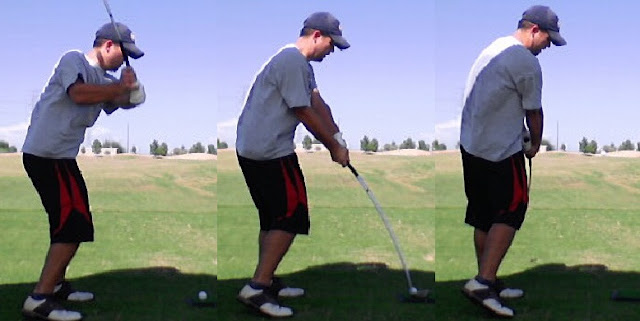Running with Brian's tumble and twisting the club about itself I isolated these two actions to what the left arm is doing. (Magic of the left arm?)
I have an idea that sprung from all this contemplation and I wonder how it would hold up to some scrutiny.
It could best be summed up like this.
Where the left elbow points is where the path is going. Where the back of the left wrist is facing is where the clubface will be facing (for neutral grips). So to control path, point your elbow where you want the clubhead to travel. To control the face, turn your wrist with your forearm.
The right arm has a roll in this as well. The more the right elbow points to the right hip, the more inside to out the path is (and flatter). Wherever the face of the right wrist bone is facing (for neutral grips) is where the clubface will be facing.
I am not at all opposed to using the back of the left wrist and palm of the right for more clubface control including loft and low point.
I have an idea that sprung from all this contemplation and I wonder how it would hold up to some scrutiny.
It could best be summed up like this.
Where the left elbow points is where the path is going. Where the back of the left wrist is facing is where the clubface will be facing (for neutral grips). So to control path, point your elbow where you want the clubhead to travel. To control the face, turn your wrist with your forearm.
The right arm has a roll in this as well. The more the right elbow points to the right hip, the more inside to out the path is (and flatter). Wherever the face of the right wrist bone is facing (for neutral grips) is where the clubface will be facing.
I am not at all opposed to using the back of the left wrist and palm of the right for more clubface control including loft and low point.
Last edited:

